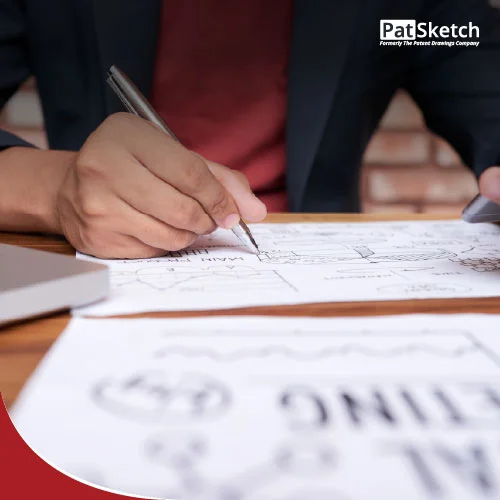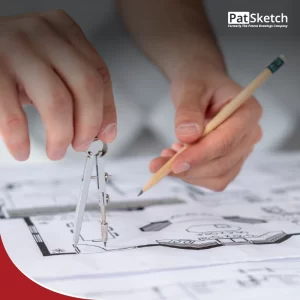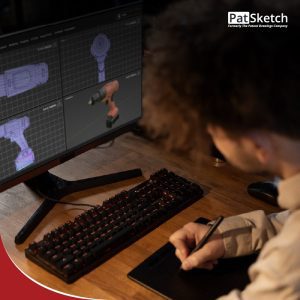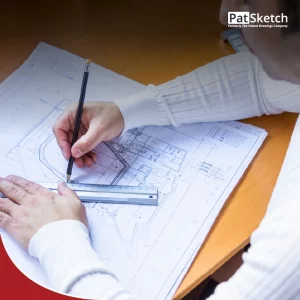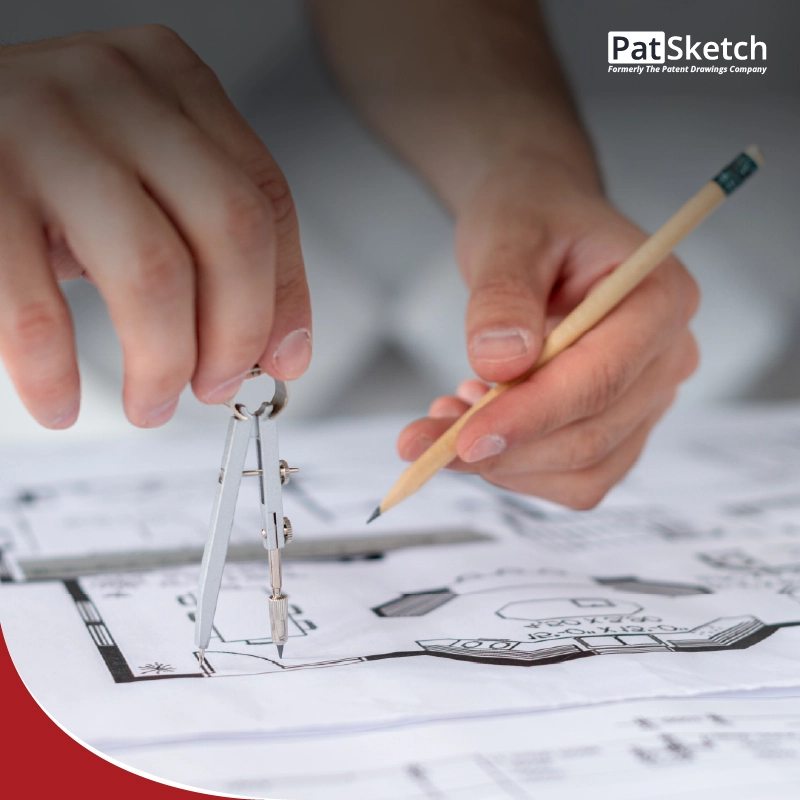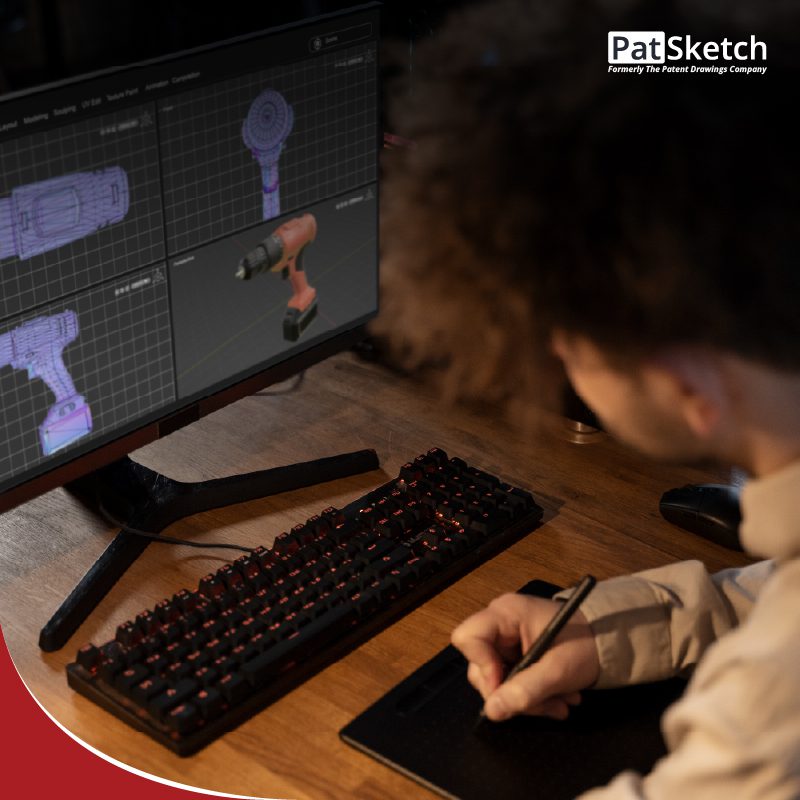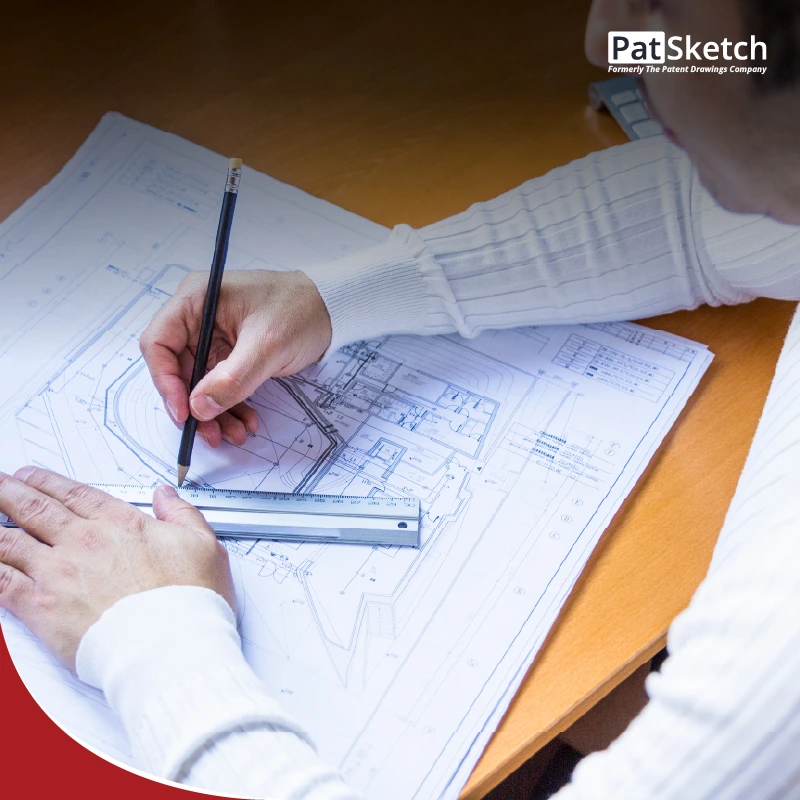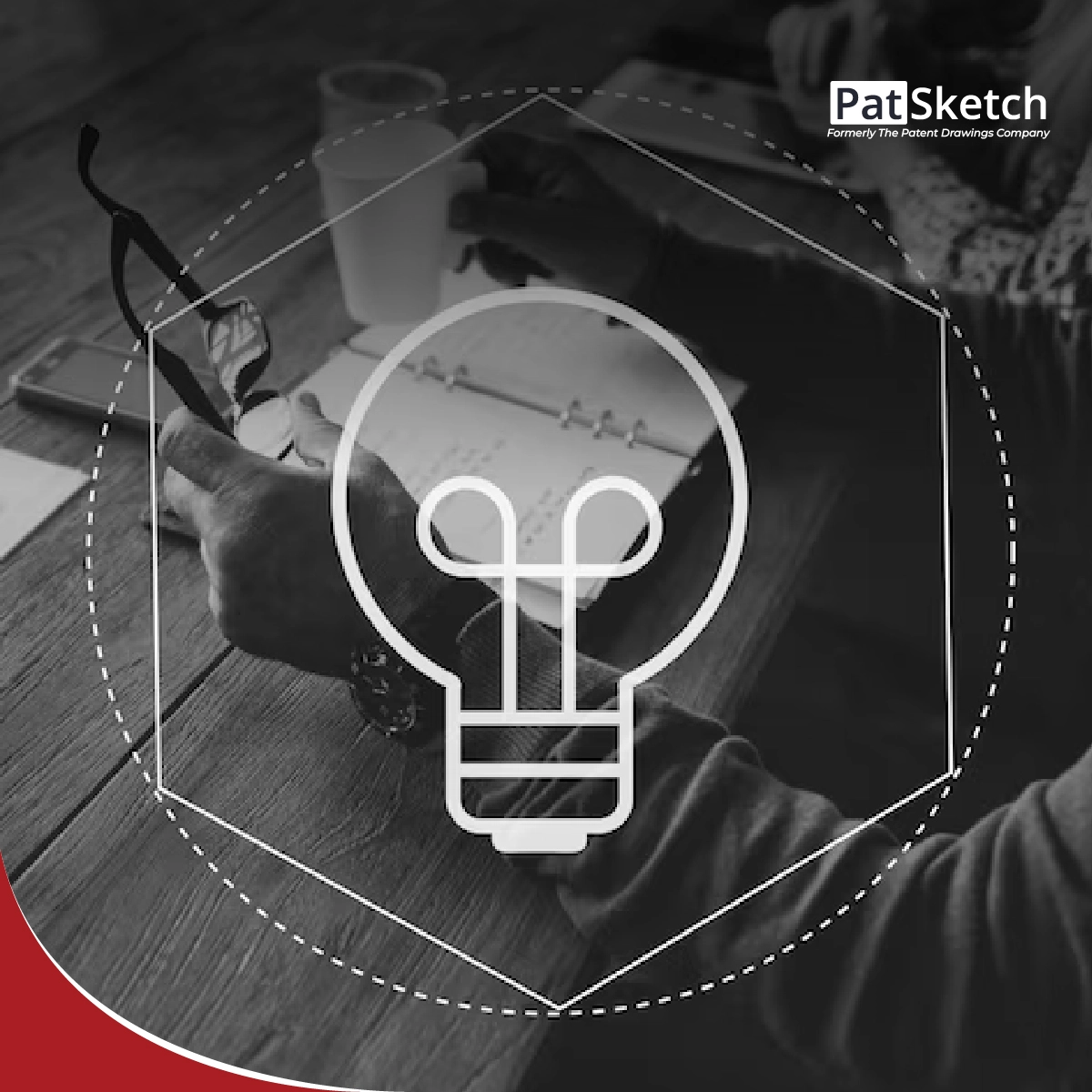In the world of patents, words explain, but drawings clarify. A well-crafted drawing can convey what pages of text cannot: how an invention works, how parts interact, and what makes it unique. More than a formality, patent drawings are strategic tools that reduce ambiguity and enhance clarity. Whether it’s a mechanical system, electrical circuit, biotech process, or digital interface, the right visuals help examiners, legal teams, and collaborators quickly grasp the essence of the invention.
But effective drawings go beyond compliance; they’re tailored to the domain. Mechanical inventions might require exploded views and sub-assemblies rather than simple dimensions. In electrical innovations, flowcharts often speak louder than wiring diagrams. And for medical devices, context matters: showing how parts fit, move, and function within the human body.
This article showcases real patent drawing examples granted by the USPTO and highlights industry-specific best practices. We demonstrate how the right visuals can bring inventions to life and why they’re essential to a successful patent application.
Mechanical Inventions
For mechanical inventions, patent drawings must depict intricate details and internal mechanisms. A strong patent drawing doesn’t just show the invention’s appearance, it reveals how it works.
Practical illustrations typically include assembly drawings, sub-assembly breakdowns, sectional views, and exploded views of all child parts for mechanical inventions. These multiple perspectives provide a complete understanding of how individual parts fit and function together, ensuring the invention’s structure and operation are easily understood.
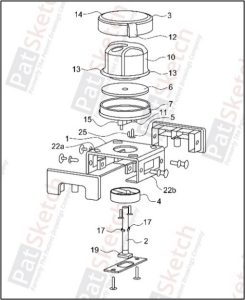
Fig No. 01
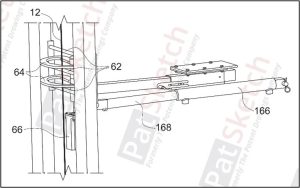
Fig No. 02
Electrical and Electronic Equipment Inventions
Patent drawings for electrical and electronic inventions should illustrate how the system functions, both structurally and logically, for electrical and electronic inventions. High-quality drawings typically include electrical flowcharts that show current paths, control logic, and the relationship between key components.
These drawings precisely convey the architecture of circuits, devices, or systems, making complex interactions easier for patent examiners and technical reviewers to understand.
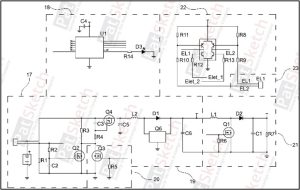
Fig No. 03
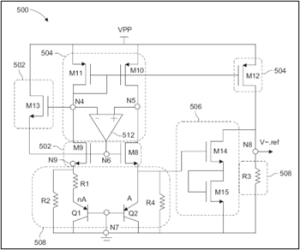
Fig No. 04
Chemical Formulations
Chemical inventions require drawings that translate molecular complexity into explicit visual representations. Effective patent illustrations for chemical formulations often include:
- Structural formula diagrams showing exact atom-to-atom connections
- Reaction sequence flowcharts mapping each step of synthesis or transformation
- Process schematics depicting reaction conditions, equipment setup, and intermediate compounds
- 3D configurations or perspective views highlighting stereochemistry or unique spatial arrangements
These visuals help examiners and practitioners quickly understand molecular interactions, points of novelty, and the overall process.
Design Patents
Design patents protect an invention’s unique look and feel by showcasing its ornamental features. Drawings should present multiple perspectives, front, back, sides, top, bottom, and isometric, using clean, consistent line weights without shading or text. These views emphasise contours, surface patterns, and silhouettes, immediately making the design’s distinctive aesthetics apparent.
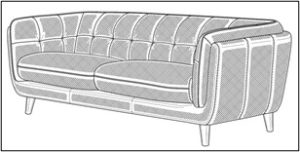
Fig No. 05
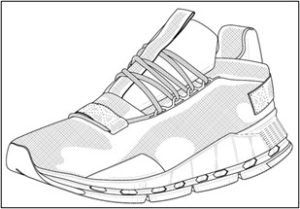
Fig No. 06
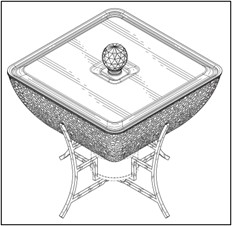
Fig No. 07
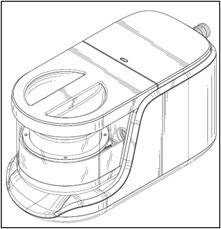
Fig No. 08
Biotechnological Inventions
Biotech patents require drawings that bridge molecular detail and experimental context. Effective illustrations combine schematics of genetic sequences with renderings of cellular or protein structures, and flowcharts of key methodologies. These visuals transform complex biological processes into clear, actionable visuals by mapping DNA or RNA arrangements, highlighting protein domains, and outlining steps such as cloning or expression protocols.
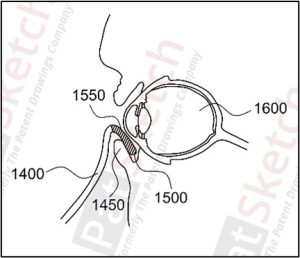
Fig No. 09
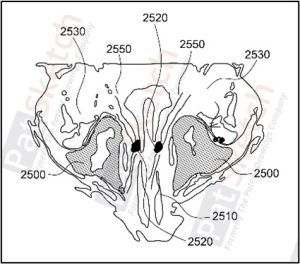
Fig No. 10
Interactive User Interfaces
With the rise of software and user interface innovations, patent drawings frequently include Graphical User Interfaces (GUIs). These must depict layout, design elements, and interactive features. An effective GUI drawing showcases functionality, indicating button placement, menu structures, and screen transitions. It’s essential to capture both static layouts and dynamic behaviours to convey how users interact with the interface.
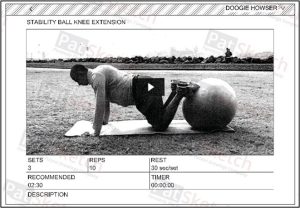
Fig No. 11
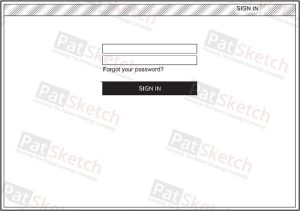
Fig No. 12
Medical Devices
Patent drawings for medical devices should highlight both the invention’s functionality and design. A practical example might include multiple views, such as cross-sections, exploded diagrams, and usage scenarios, to show how the device addresses specific medical needs.
Drawings should capture the overall form, internal mechanisms, and relationships between components. Assembly and sub-assembly diagrams, detailed exploded views, and cross-sections reveal how each part functions. Usage scenarios or illustrations showing the device in action help demonstrate real-world applications. These detailed visuals ensure examiners fully understand the device’s purpose and construction.
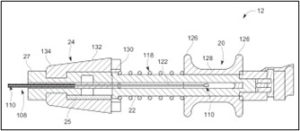
Fig No. 13
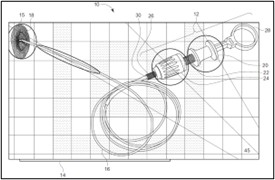
Fig No. 14
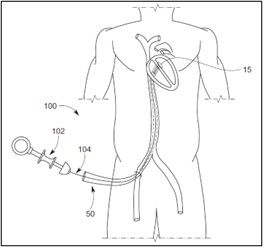
Fig No. 15
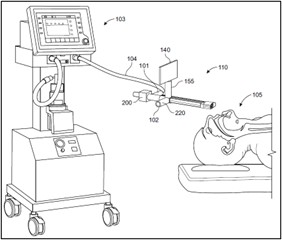
Fig No. 16
Automotive Innovations
Patent drawings for automotive technologies should depict mechanical systems while highlighting each innovation’s standout features. Effective illustrations may show engine configurations, transmission layouts, aerodynamic profiles, and unique safety or performance enhancements, using precise views and clean lines to convey both structure and function.
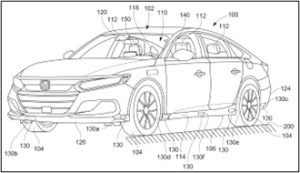
Fig No. 17
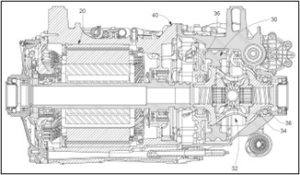
Fig No. 18

Fig No. 19
Sustainable Energy Solutions
Patent drawings for sustainable energy solutions should map the technical systems and their ecological context. Strong illustrations depict key components: solar panels, wind turbines, storage units, and the energy flow between them. Contextual insets or flow diagrams can show how the invention integrates on-site and reduces environmental impact, immediately clarifying both function and green benefits.
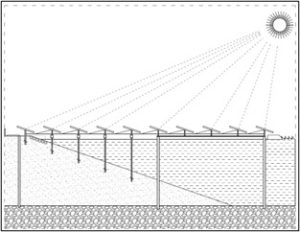
Fig No. 20
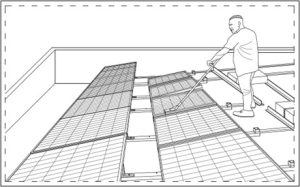
Fig No. 21
Robotics and AI
Patent drawings for robotics and AI inventions must capture hardware and intelligence in a cohesive visual narrative. Compelling illustrations combine orthogonal or isometric views of the robot’s frame and joints with callouts for sensors and actuators. Complementary flow diagrams or overlays can represent decision-making pathways, whether obstacle avoidance, object recognition, or coordinated movement sequences, so that examiners instantly grasp how the physical form and software logic work together.
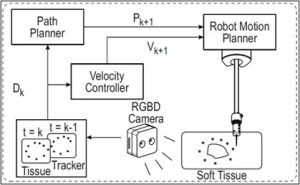
Fig No. 22
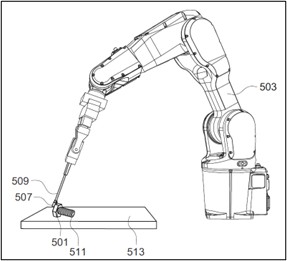
Fig No. 23
Final Thoughts
These examples offer just a glimpse of what professional patent drawing services can achieve. Every invention is unique, and your patent drawings should accurately reflect its distinct features, functionality, and design. With the right expertise, patent drawings can meet compliance standards and effectively communicate your invention’s essence.
PatSketch
At The Patent Drawings Company, we provide expert patent drawings services that meet the highest standards of accuracy and compliance. Our team specializes in both utility patent drawings services and design patent drawings services, delivering detailed, USPTO-compliant illustrations tailored to your specific invention. Whether you’re patenting a complex mechanical device or a sleek product design, our drawings help bring your ideas to life with clarity and precision. Trust us to be your partner in the patent process.

